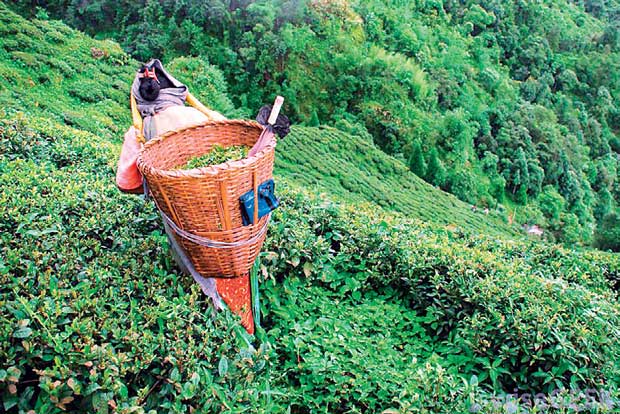20 Sep 2016 - {{hitsCtrl.values.hits}}

By Oxford Business Group
Adverse weather conditions, combined with rising costs and greater competition, threaten to weaken Sri Lanka’s position in the global tea industry, though efforts to develop new markets could help offset downturns in exports and revenue.
Flooding in mid-May struck a number of tea-producing regions and led to the inundation of several tea export facilities around Colombo, causing widespread disruption and compounding losses from El Niño-related drought conditions in the first half of this year.
According to a research note issued by Colombo-based broker John Keells in mid-August, output from Sri Lanka’s plantations remains low, at a time when production by key competitors is rising.
“Most black tea-producing countries have recorded substantial gains,” the report noted. “However, crop harvest from the Sri Lankan perspective is yet to show any significant improvement and continues well below last year’s levels.”
As of the end of the first half of the year, Sri Lankan production totalled 153m kg, down 11 percent y-o-y. By comparison, Indian production increased by 22.3 percent y-o-y to 230m kg, while Kenyan growers posted even stronger results, with harvests up 42.3 percent to 249m kg.
Exports ease
Tea exports from January to June were down 3.4 percent y-o-y to 146.5m kg, according to figures from the Tea Exporters Association, with declines seen in both packets and bags.
The fall in exports accelerated following May floods, though there was a modest gain in free-on-board value per kg, which was up 1.8 percent yoy to Rs.609.88 ($4.20) in the first half of the year. Nonetheless, overall rupee-denominated export revenues declined by 51.6 percent over for the period.
Market pressures
Along with stronger competition, exports have been affected by downturns in some key overseas markets – in particular, by the slowing of the Russian economy, combined with conflicts in some areas of the Middle East and the ongoing US-imposed banking restrictions affecting trade with Iran.
To counter these headwinds, new avenues need to be opened, according to Malik Fernando, director of a leading value-added exporter,
Dilmah Tea.
“It’s imperative to find new distribution markets, as 75 percent of Ceylon tea heads to Russia and the Middle East,” Fernando told OBG. “The industry needs to hedge itself to avoid an even larger drop in demand.”
While also acknowledging that sales are falling, Rohan Pethiyagoda, chairman of the Sri Lanka Tea Board, told OBG that the process of deepening penetration in new countries is gaining pace and should help offset any downturn.
“Our primary export markets are struggling,” he said, mentioning Syria, Turkey, Iran, Iraq and Russia. “China and North America are new options for exports on the horizon. Currently, 6 percent of all exports go to China, and this is growing by 30 percent per year.”
Officials have also been promoting Sri Lankan tea, with pitches being made in China as well as the developing US market, where organic strains have already carved out a niche in areas like California.
Laboured production
Higher wages, however, might curb Sri Lanka’s competitive edge in entering new markets, with Kenyan and Indian pluckers paid less than half as much per day on average as Sri Lankan plantation workers.
Worse, tea plucking in Kenya, the country’s strongest competitor, is almost entirely mechanised, whereas plucking in Sri Lanka is done predominantly by hand because of differences in terrain and the way tea is planted. This results in labour costs that are an order of magnitude higher
than Kenya’s.
As wages account for up to 80 percent of input costs for the tea industry, labour pricing, combined with lower productivity, is putting Sri Lankan growers at a disadvantage in the global market.
Wages have been inflated in part by a developing shortage of skilled labour in the industry, as the rural workforce increasingly shifts to employment in urban areas.
The appeal of higher wages and greater prospects in other sectors of the economy is also siphoning off the traditional labour pool of the tea segment, increasing the bargaining power of workers’ representatives in wage negotiations.
If weather conditions improve in the coming year, spurring a rebound in production, along with higher demand and prices in traditional export markets, Sri Lanka could regain some of its lost market share and boost revenue. This, in turn, could help plantation owners meet some of the wage demands from their workforce and allow smallholders who account for around 75 percent of the tea produced to improve their incomes.
25 Nov 2024 3 hours ago
25 Nov 2024 4 hours ago
25 Nov 2024 4 hours ago
25 Nov 2024 6 hours ago
25 Nov 2024 6 hours ago